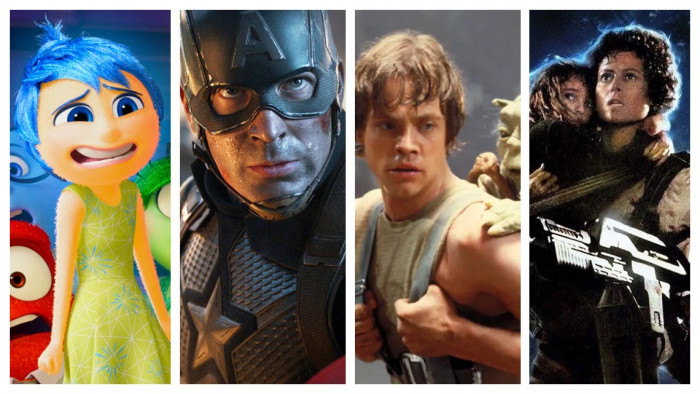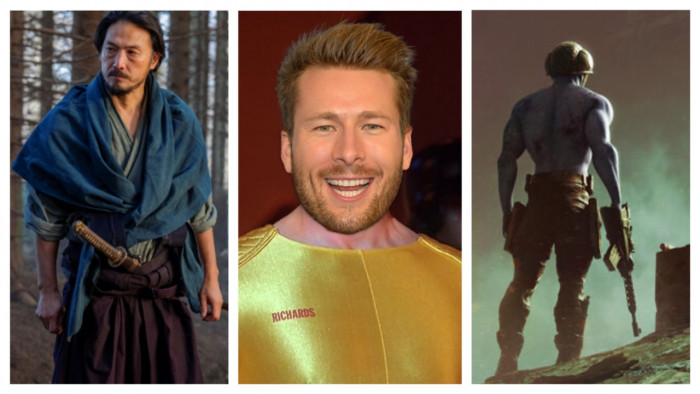15 things you (probably) didn't know about 12 Monkeys
15 things you (probably) didn't know about 12 Monkeys


With an original TV show based on Terry Gilliam's consistently unsettling 12 Monkeysbeginning filming in November, we thought it time to revisit the former Python's 1995 classic and dig up 15 facts you may not know about it. If you knew them all, just try and look interested so the rest of us don't feel daft, huh?
(Images: Rex & YouTube)

1.
Director Terry Gilliam had "final cut" on the finished film, something he had never been allowed before. The studio stipulated, however, that he deliver the movie at no stronger than an 'R' rating and no longer than two hours and 15 minutes in length. It's 2 hours and 7 minutes long.

2.
Gilliam had just abandoned a film adaptation of A Tale Of Two Cities when he signed to direct 12 Monkeys. A Tale Of Two Cities had Mel Gibson on board to play Sydney Carlton for a while, and then Liam Neeson, before being canned.

3.
Terry Gilliam was afraid that Brad Pitt wouldn't be able to pull off Jeffrey Goines' nervous, rapid speech. He sent him to a speech coach (pictured) but in the end he just took away Pitt's cigarettes, sending Pitt just about loopy enough for the role.

4.
In the original script, the time machine sequence was only two sentences long. After the crew secured a disused power station for the location of the scene, they decided it lent itself to a much more grandiose moment in the movie. Which of course, it was. See it here. In the "Making Of" documentary Bruce Willis and Terry Gilliam are filmed laughing at how big the scene had become.

5.
In a scene where Bruce Willis is drawing his own blood, the tiny shadow of a hamster in a hamster wheel can be seen. This scene would normally be shot in 5 minutes, but took a whole day because the hamster would not move, and Gilliam - being a perfectionist - insisted that even this detail should work as intended. For the rest of the production Gilliam's perfectionism was nick-named "the Hamster Factor". You can hardly see the little blighter!

6.
Although the movie was inspired by Chris Marker's classic 1962 short, La Jetée (1962), director Terry Gilliam had not seen the French science fiction featurette, even during filming. Gilliam also said: "I don't think this film is La Jetée... It was the springboard [for 12 Monkeys], but the diving board is not the dive".

7.
Gilliam's first choice for the role of Cole was Jeff Bridges, who he had working with on The Fisher King, but the studio wanted a bigger star, so he cast Bruce Willis. Ironically, Willis had originally auditioned for The Fisher King, but lost out to Bridges.

8.
The scenes in the insane asylum were shot in Eastern State Penitentiary (ESP), a now unused prison in Philadelphia. At its completion ESP was the largest and most expensive public structure ever erected. In 1929 it housed Al Capone. His cell is pictured.
Image: Wikicommons

9.
In the "Making Of" documentary the actor who plays the cop who kills Cole (pictured) says that a Bruce Willis' character had never been killed in a movie prior to 12 Monkeys.

9.
Gilliam wanted the movie to open on a shot of the young Cole and close on a shot of the young Cole. Alas, the boy he cast (top), though visually perfect, wasn't acting the part to the director's satisfaction. Producer Chuck Roven, who was never satisfied with the original casting decision, insisted on having an alternate young Cole on stand by. That Cole (below) came in and nailed it.

11.
Terry Gilliam had a near-fatal horse riding accident during production.

12.
The title and logo design are inspired by the "Get off the Earth" puzzle created by Sam Loyd in 1898 (pictured). It consists of 13 characters on two dials. When twisted, one disappears.

13.
A tagline originally suggested for this film was; "The future is in the hands of a man who has none." It was torpedoed because it made it sound as though Cole had no hands, as opposed to having no future.

14.
One of the more "out there" poster concepts that the marketing team came up with looked like... well, this.

15.
Bruce Willis took a lower salary than his star-status would demand, partly because of budget restrictions, but mostly because he wanted to work with Terry Gilliam. Technically, Bruce did the movie for free. It was only after the movie was released that he was paid.
Latest
Related Reviews and Shortlists


The 10 best war movies of the 21st century








